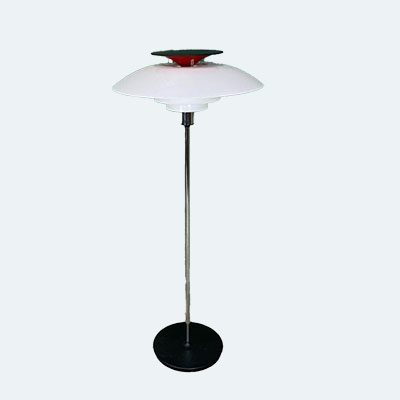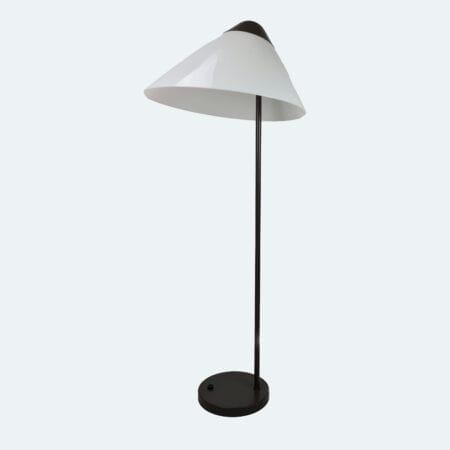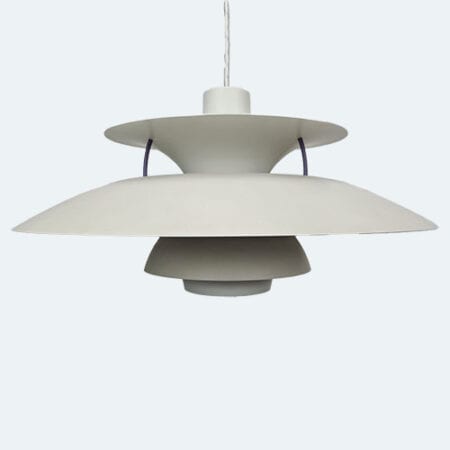Design story
PH80 floor lamp was designed in 1925-1926. The first lights using the three shade system were designed by Poul Henningsen (PH) in cooperation with Louis Poulsen for an exhibition in Paris. Their partnership continued up until Henningsen’s death in 1967.
The PH80 floor lamp is based on the same three-shade design centred on the logarithmic spiral. The material is opal acrylic, and the top shade is red to provide warm and atmospheric lighting. The light model number does not refer to the top shade diameter as is normally the case for his three-shade models. The lamp was created in 1974 after PH’s death to mark 80 years since his birth – hence the name PH80 floor lamp.
At the beginning of world war II Poul Henningsen (or simply PH) worked as head architect of the Tivoli Gardens in Copenhagen. However, his obsession with light made him focus on lamps. He was not a fan of light bulbs and he worked on the premise that the observer should not be exposed directly to harsh electric light. A lot of work went into trying to replicate the soft and relaxing glow of petroleum lamps that PH grew up with
When the lamp was introduced, he wrote about how he had lost faith that the manufacturers of incandescent light bulbs would ever learn to consider common sense or put the customer first: “I have accepted fate, and with Louis Poulsen´s permission I have designed a PH fixture, which can be used with any kind of light source, Christmas lights and 100 W metal filament bulbs. Although a fluorescent tube would be too much to ask in the existing form!” Poul Henningsen wanted to improve the colour reproduction characteristics of the light source in the PH80 floor lamp.
Small red and blue shades were therefore inserted to supplement the colour in the part of the spectrum where the eye is least sensitive – the red and blue areas – thereby subduing the light in the middle yellow-green region where the eye is most sensitive. At the time, no one knew that the Henningsen’s innovation would become a design icon that remains 100% glare-free, regardless of how the light is installed or which light source is used.
The red and blue rings are however no longer needed to achieve superior light quality, as today’s light bulbs reproduce daylight far better than in the 1950s.






